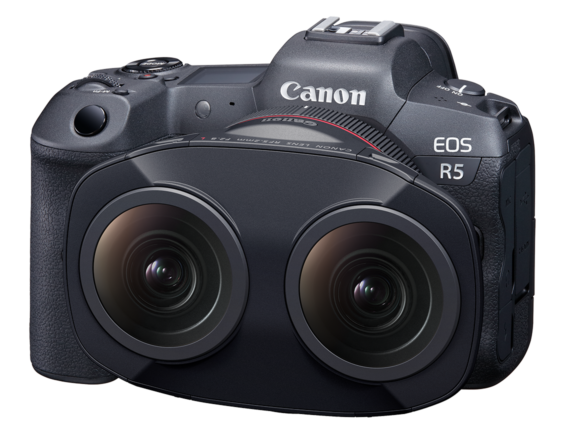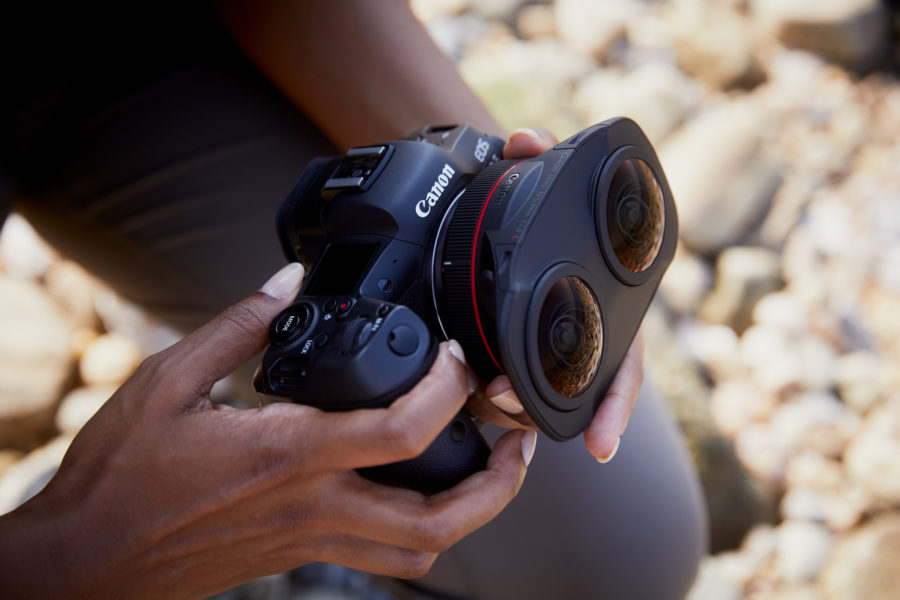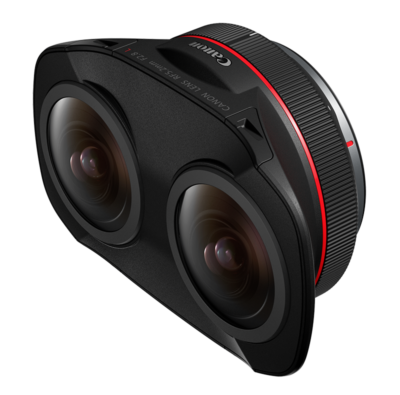October 7, 2021 – Canon U.S.A., Inc., the well known camera brand and provider of digital imaging solutions, has introduced its first product aimed at immersive storytellers with the launch of the RF5.2mm F2.8 L Dual Fisheye lens.
The new lens will bring stereoscopic 3D virtual reality (VR) capture to Canon EOS R5 cameras equipped with an upcoming firmware update (version 1.5.0 or later) as part of the EOS VR System, which will support the use of the lens with new VR shooting specific functions as well as Canon’s upcoming EOS VR software solutions for conversion and processing.

The EOS VR System shoots and records stereoscopic 3D 180° VR imagery as left and right fisheye images to a single full-frame image sensor, which Canon states helps to solve common VR challenges of stitching and synching, by outputting one single image file. In order to experience any content captured with the system, a compatible VR headset (such as the Oculus Quest 2) is recommended.
“As Canon’s first entry into the world of virtual reality image capture, the EOS VR System represents an important milestone in our company’s rich history as a lens manufacturer and welcomes a bright future for VR content creation,” said Tatsuro “Tony” Kano, Executive Vice President and General Manager of Canon U.S.A.’s Imaging Technologies & Communications Group. “This new RF lens produces a stunning 8K virtual reality image and sets itself apart through its simplified workflow. Our goal is to make immersive storytelling more accessible for all.”

The RF5.2mm F2.8 L Dual Fisheye can be packed in a camera bag and is compact, lightweight, and portable, according to Canon. Additional features the VR lens include:
- Ability to operate just like other interchangeable Canon RF mount lenses;
- 190 degree field of view capture from two separate optical systems;
- Close-focusing distance of 7.87-inches/0.2m is possible – max magnification is 0.03x;
- Aperture range of f/2.8 to f/16 with electronically controlled apertures, a 7-blade aperture and simultaneous electro-magnetic diaphragm for both left and right lenses;
- Engineered with an interpupillary distance of 60mm for delivery of 3D imagery in VR;
- Subwavelength coating technology offering flare control in backlit conditions;
- Fluorine Coating on the front lens elements, with a dust and water resistant design;
As noted above, the company is currently developing its upcoming EOS VR software, which will consist of two paid subscription-based solutions for the post-production process. Canon’s EOS VR Utility will offer the ability to convert clips from dual fisheye image to equirectangular and make quick edits, as well as select the resolution and file format before export. With the EOS VR Plug-In for Adobe Premiere Pro, creators will be able to automatically convert footage to equirectangular, and cut, color, and add new dimension to stories with Adobe Creative Cloud apps, including Premiere Pro. Canon stated that further details and availability information on the solutions will follow in early 2022.

Furthermore, Canon’s free Camera Connect app and Canon’s EOS Utility program will also both be updated in the future to offer remote control live view functionality for monitoring purposes while on-the-go, according to the company.
The Canon RF5.2mm F2.8 L Dual Fisheye lens is scheduled to be available in late December 2021 for an estimated retail price of USD $1,999.00. In addition to the lens, both of Canon’s EOS VR Software solutions (EOS VR Utility and the EOS VR Plug-in for Adobe Premiere Pro) are currently scheduled to be available in late December 2021 as paid subscription-based offerings, but will offer free trial periods as well as the ability to process still images and certain clip lengths for free.
For more information on Canon’s new VR capable lens, please visit the company’s website.
Image / video credit: Canon U.S.A. / YouTube
About the author
Sam Sprigg
Sam is the Founder and Managing Editor of Auganix. With a background in research and report writing, he has been covering XR industry news for the past seven years.




